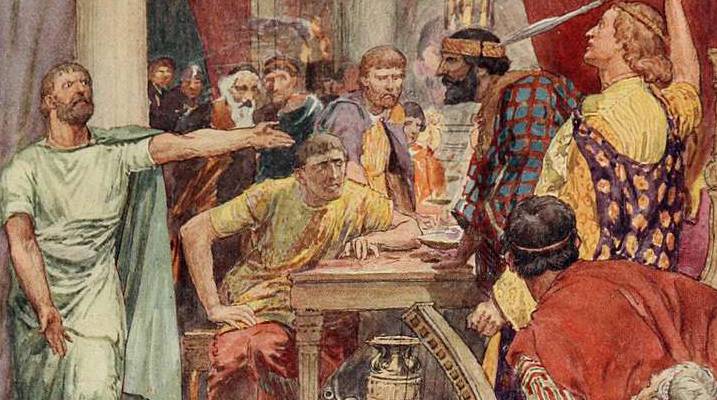Sometimes It Takes A Madman
Leaders of armies, leaders of people, leaders of nations—all have their places in the history books, whether they’re remembered for their courage and tenacity, or their brutality and...questionable mental health.
History remembers leaders of all stripes, ones that drove progress and prosperity for their countries and ones that claimed millions lives in their lust for power.
Leaders are sometimes revered or reviled for the decisions they make. Let’s examine forty unhinged leaders who fall into the latter category.

Alexander The Great
Alexander The Great conquered much of the known world in the 4th century, capturing territory from Greece to the northwest of India, covering an area of roughly 3,000 miles.
 Unknown author, Wikimedia Commons
Unknown author, Wikimedia Commons
Committed Amicide
While skilled in military conquest, Alexander was not so skilled in anger management…
After a particularly heavy bout of drinking following the capture of Samarkand in 340 BCE, Alexander threw a pike through his friend Cleitus the Black's chest following a drunken quarrel.
Luigi Cadorna
General Luigi Cadorna may not be the most famous leader, but there are not many more people befitting the title of “unhinged”.
One of the most hated men in history, Cadorna would blame the men beneath him for the Italian losses during WWI and charged nearly six per cent of all Italian men under his command with one crime or another. But that was him taking it easy.
 Unknown Author, Wikimedia Commons
Unknown Author, Wikimedia Commons
Executed His Own Men
Cadorna had 750 of his men executed during his tenure as Chief of Staff of the Italian Army from 1914 to 1917. If he'd had his way, that number would have been even higher.
Hong Xiuquan’s God Complex
In the mid-19th century, southern China was in a state of rebellion. Mostly spurred on by Hong Xiuquan, leader of the Taiping Rebellion between 1851 and 1864. Xiuquan believed he was the younger brother of Jesus Christ, following some bizarre hallucinations.
 Unknown Author, Wikimedia Commons
Unknown Author, Wikimedia Commons
He Thought He Was A God
Xiuquan's “God’s Other Son” complex led him to cult-like status and he would lead his followers on a crusade against the ruling Qing Dynasty. Unfortunately for him, he was not the Brother of Christ, but a mere mortal—his hallucinogenic idealism would cost his life and the lives of 20 million people, as the Qing Dynasty brutally put down his rebellion.
 battle-of-qurman.com.cn, Picryl
battle-of-qurman.com.cn, Picryl
Gebhard Leberecht von Blücher
While the British thanked General von Blücher very much for his assist at the Battle of Waterloo in 1815, the Prussian army’s leader wasn’t all there, as it were.
 Peter Edward Stroehling, Wikimedia Commons
Peter Edward Stroehling, Wikimedia Commons
He Said He Was Pregnant
General von Blücher once claimed to have been impregnated by a French Grenadier. With an elephant.
He was also a dab hand at fencing and would often try to kill house flies with his sabre—unsuccessfully, I might add.
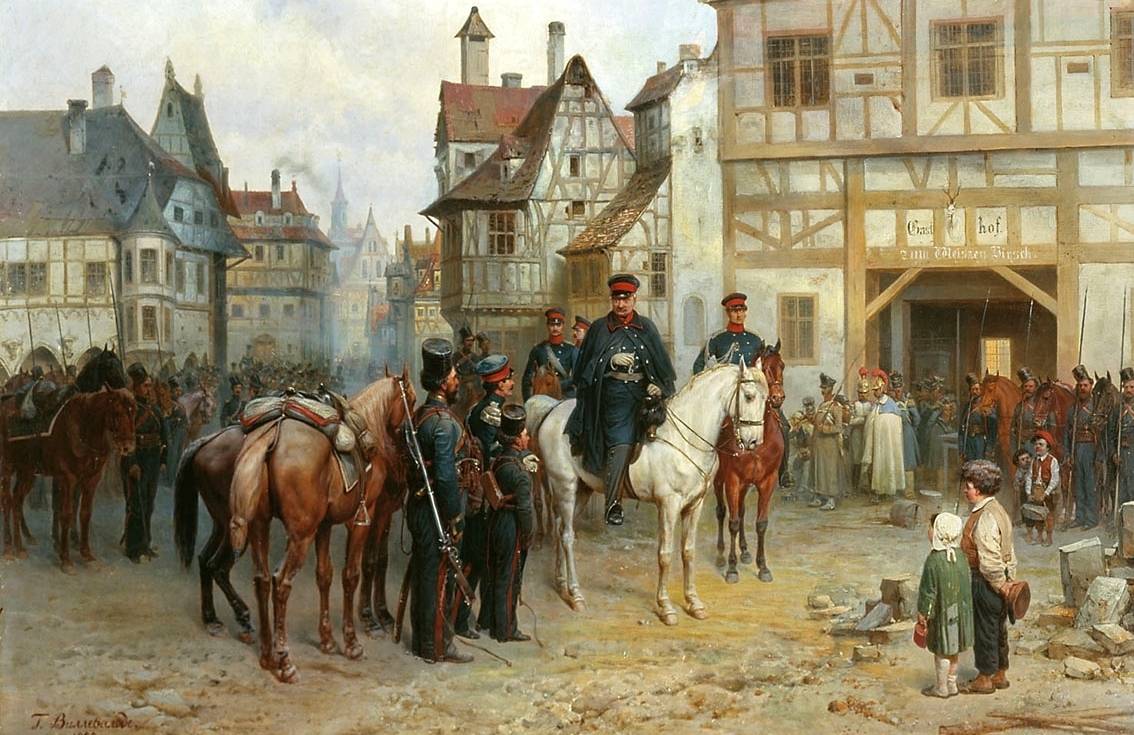 Bogdan Willewalde, Wikimedia Commons
Bogdan Willewalde, Wikimedia Commons
King Charles VI of France
This King of France was well-known for being unable to lead his armies into battle and delegating that role to his Generals instead. Not exactly madness, it was more self-preservation, methinks. The madness came later. As his mental state deteriorated, the King became prone to fits of paranoia, attacking advisors with swords at random.
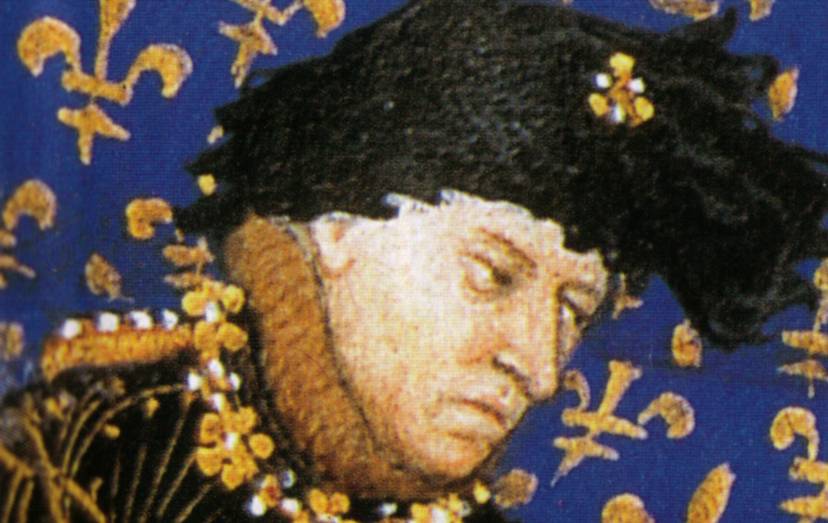 Mazarine Master, Wikimedia Commons
Mazarine Master, Wikimedia Commons
He Thought He Was Made Of Glass
Charles VI would also forget that he was married, or a father, and believed that he was made of glass, wearing a suit with iron bars sewn in to protect his body from shattering. You can almost hear Napoleon shaking his head in disgrace…
Oliver Hazard Perry
One of America’s famous Revolutionary War naval commanders would fight off the British fleet at Put-in-Bay on Lake Erie in 1813, but couldn’t fight off a phobia of crows. He shrugged off impending British cannon fire but was found cowering in his quarters when crows flew overhead.
 Jane Stuart, Wikimedia Commons
Jane Stuart, Wikimedia Commons
William Tecumseh Sherman
William Sherman, a General that had a tank named after him! He made himself famous by leading the Union Army in Tennessee. He had an air of ruthlessness about him but was a competent leader. It is said that Sherman also suffered from delusions and could frequently be found pacing his quarter and chain-smoking while ranting about defeat by the Rebels.
 Unknown author, Wikimedia Commons
Unknown author, Wikimedia Commons
Ivan The Terrible
Otherwise known as Ivan VI, Ivan Vasilyevich transformed Russia into an imperial power during the mid to late 14th century—but he didn't do it by playing nice. Beginning his reign over Russia in 1547, “Ivan the Terrible” would spend the next three decades as ruler, beginning his reign by massacring Russian nobility.
But that was nothing compared to when Ivan got older and crazier...
 Viktor Vasnetsov, Wikimedia Commons
Viktor Vasnetsov, Wikimedia Commons
He Committed Filicide
Ivan the Terrible was prone to bouts of unbelievable violence, once assaulting his pregnant daughter-in-law and bashing his son's brains in when he came to intervene.
Though no one dared call him "Ivan the Terrible" while he was alive, you can be sure they started as soon as he was gone.
 Kazimierz Waliszewski, Wikimedia Commons
Kazimierz Waliszewski, Wikimedia Commons
Sir William Erskine
The Duke of Wellington was without a doubt one of Britain’s best-ever commanders. So, when he warned London that sending him a general with the mental fragility that Sir William Erskine possessed, they should have listened.
Instead, Erskine (who’d spent time in not one, but two mental institutions) was generously described by the one official as “an uncommonly clever fellow during his lucid intervals” while admitting he was "sometimes a little mad". Erskine took his own life at age 43.
 George Romney, Wikimedia Commons
George Romney, Wikimedia Commons
Richard S. Ewell
According to historical portraits, Confederate General Richard Ewell had a beak-shaped nose and bald head. The General would take his appearance to heart, at times believing that he was a bird—even going so far as to peck at his food and make chirping noises.
 Civil War Glass Negatives, Wikimedia Commons
Civil War Glass Negatives, Wikimedia Commons
Georgios Hatzianestis
When Greece and Turkey went at it in 1919 (a brief three-year conflict that concluded in 1922) during the collapse of the Ottoman Empire, they appointed General Georgios Hatzianestis to run the show. Unfortunately, General Hatzianestis was less of a military leader and more of a politician—but, his lack of leadership skills weren’t the only issue with General Georgios.
 Bibliothèque nationale de France, Picryl
Bibliothèque nationale de France, Picryl
He Thought He Was A Ghost
General Hatzianestis apparently would have bouts of lying completely still, believing he was dead. He would also refuse to get out of bed, for fear of shattering his legs that he believed were made of glass or sugar.
 Unknown Author, Wikimedia Commons
Unknown Author, Wikimedia Commons
Douglas MacArthur
Douglas MacArthur was an American general in WWII and Korea commanded forces in the South Pacific for over nine years in both campaigns. General MacArthur was a competent and fierce leader—who unfortunately fell victim to severe mood swings during the latter years of his life, vacillating between a dark depression and manic glee.
 Harris & Ewing, Wikimedia Commons
Harris & Ewing, Wikimedia Commons
John D. Bulkeley
Vice-Admiral John D. Bulkeley was a decorated American hero during WWII, earning a Medal of Honor during campaigns in the Pacific Theatre. However, he was also very paranoid about keeping secrets. Ok, lots of military men are paranoid—but Bulkeley took it to unhinged levels.
He Dressed Like A Ninja
Bulkeley would reportedly dress up as a ninja when he was Commander of a Clarksville, TN base, donning all black and attempting to sneak past the Marines guarding the base.
 National Museum of the U.S. Navy, Wikimedia Commons
National Museum of the U.S. Navy, Wikimedia Commons
George Custer
General Custer will be a name you’re familiar with. But, did you know that he loved dogs? Like, too much. He had 23 dogs when he and his wife lived in Texas in 1866. Apparently at his peak, he had between 40 and 80 of man’s best friends at one time.
 Mathew Brady, Wikimedia Commons
Mathew Brady, Wikimedia Commons
Curtis LeMay
General Curtis LeMay oversaw the transformation of the United States as a superior air force following the conclusion of WWII and into the Cold War era. He commanded the USAF during its firebombing campaigns against Japanese cities and oversaw the transformation post-WWII of the United States to an all-jet air force.
But if he'd had his way, the firebombing would have been a drop in the bucket.
 US Air Force, Wikimedia Commons
US Air Force, Wikimedia Commons
He Was Crazy For Nukes
LeMay was a fierce advocate for the use of nukes and pushed back hard against any attempts to limit American production of nukes. He reportedly drew up plans in 1949 to destroy Russia using nukes.
 Library of Congress, Wikimedia Commons
Library of Congress, Wikimedia Commons
Thomas Power
General Thomas Power was Curtis LeMay’s successor. He was described by LeMay as a “sadist.” If you thought Curtis LeMay advocated for nukes a little too eagerly, Thomas Power may well have enthusiastically pushed the button himself.
 Air Force photo, Wikimedia Commons
Air Force photo, Wikimedia Commons
He Made LeMay Look Sane
He is quoted as pushing back against a Rand study advocating for nuclear proliferation by saying, “Why are you so concerned with saving their lives? At the end of the war, if there are two Americans and one Russian, we win".
 U.S. Government, Wikimedia Commons
U.S. Government, Wikimedia Commons
Anthony Wayne
General Anthony “Mad” Wayne was something of an oddball during the Revolutionary War. Sent by General Washington to Stony Point on a reconnaissance mission, he would attack the British defenses at New York with only bayonets!
By this era, most soldiers on both sides would fire their rifles and only fix bayonets when the enemy was within stabbing range. Not Wayne, he stormed the British defenses at night using only bayonets — and won!
 Edward Savage, Wikimedia Commons
Edward Savage, Wikimedia Commons
Quintus Servilius Caepio
Quintus Servilius Caepio was a Roman commander at the Battle of Arausio in 105 BC. He had a stubborn self-aggrandizing nature that would ultimately cost the Roman army dearly. He refused to follow the orders of his superior, Consul Gnaeus Mallius Maximus, and refused to share a camp with his superior officer out of pride.
But it was his rash actions at Arausio that would prove him unhinged.
He Charged And Blew It
While Maximus was in negotiations with a force of Germanic tribesmen, Caepio charged at the tribal army, known as the Cimbri, and lost. Not only did he lose, surviving the battle, but his superior, Maximus was then set upon by the betrayed Cimbri, losing 120,000 men in the process.
Caepio was stripped of his titles and exiled immediately thereafter.
 Weston, W H; Plutarch, Wikimedia Commons
Weston, W H; Plutarch, Wikimedia Commons
Francisco Solano Lopez
Francisco Solano Lopez was a military leader of Paraguay in the mid to late 19th-century. He was bequeathed this role by his father, dictator Carlos Antonio Lopez. Francisco was warned by his father not to use his martial power to settle diplomatic disputes… But did he listen? Of course not.
 Unknown Author, Wikimedia Commons
Unknown Author, Wikimedia Commons
He Set His Country On Fire
Solano ignited wars with Brazil, Argentina, and Uruguay over fairly minor diplomatic spats and caused a five-year war between Paraguay and the above-mentioned nations, during which more than half of the fighting-age population of Paraguay lost their lives. Lopez himself was KIA in 1870.
 Domenico Parodi, Wikimedia Commons
Domenico Parodi, Wikimedia Commons
Douglas Haig
Field Marshal Haig was one of the premier leaders of the British forces in WWI. The "unhinged" part of Haig’s leadership comes from his willingness to sacrifice men by the hundreds of thousands to obtain objectives.
 Elliott & Fry, Wikimedia Commons
Elliott & Fry, Wikimedia Commons
He Doomed Hundreds Of Thousands Of Men
Seemingly unable to rethink tactics or see beyond the end of his nose, Douglas Haig was responsible for British losses of more than 700,000 men. “Lions led by donkeys,” as the phrase goes.
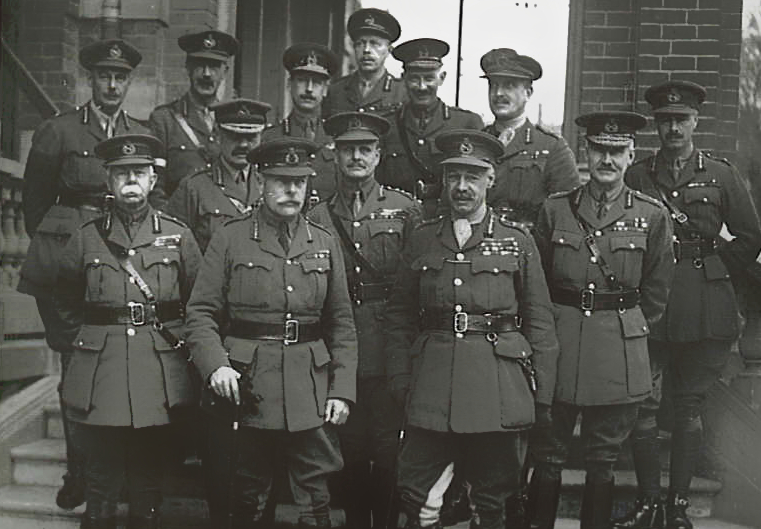 David McLellan, Wikimedia Commons
David McLellan, Wikimedia Commons
George McClellan
George McClellan was one of the American Civil War’s most inept leaders who should have been one of its best. Were it not for his complete lack of leadership skills and courage…What he lacked in leadership skills and courage he made up for in organization—although, apparently, not enough.
 Mathew Benjamin Brady, Wikimedia Commons
Mathew Benjamin Brady, Wikimedia Commons
He Was Too Scared To Fight
McClellan was General-in-Chief of the entire Union forces for a time and during that time never fought a battle, as he did not wish to fight a superior force, instead ordering retreat after retreat. Unhinged insofar as being totally unfit for leadership, that was George McClellan.
 Alexander Gardner, Wikimedia Commons
Alexander Gardner, Wikimedia Commons
Pierre-Jean-Charles-Baptiste-Silvestre de Villeneuve
Quite the mouthful that name, I know. We’ll just call him “Villeneuve” or “Pierre” for brevity’s sake. The Napoleonic War admiral who ran away at the Battle of the Nile, then completely disregarded Napoleon’s orders to advance on the English Channel during the Emperor’s attempted foray across it, instead sailing for the Spanish port of Cadiz. He didn't realize it, but he was dooming the French cause.
 Clarkson Frederick Stanfield, Wikimedia Commons
Clarkson Frederick Stanfield, Wikimedia Commons
He Blew It At Trafalgar
Villeneuve's blunder allowed Admiral Nelson’s English fleet to scupper French plans for an invasion via the English Channel. Villeneuve was relieved of command following this debacle and is partially responsible for the English victory at Trafalgar, his cowardice costing Napoleon dearly.
 Clarkson Frederick Stanfield, Wikimedia Commons
Clarkson Frederick Stanfield, Wikimedia Commons
Peter III
Russian Tsar Peter III is well-known for being the husband of Catherine the Great, and being deposed by his wife. However, he is less remembered for his rather peculiar mannerisms and behaviors.
 Lucas Conrad Pfandzelt, Wikimedia Commons
Lucas Conrad Pfandzelt, Wikimedia Commons
He Played With Toys
It is widely believed that Peter III was so obsessed with toy soldiers that rather than consummating his marriage to Catherine on their wedding night, he pulled out a box of his toys and asked his new wife to play with them until 2 AM.
 Georg Cristoph Grooth, Wikimedia Commons
Georg Cristoph Grooth, Wikimedia Commons
Caligula of Rome
It’s thought that Caligula is one of history’s most unhinged rulers—and that's saying something. He ruled with an iron fist and used his sadism as a weapon. One of his first crazy acts was to attempt to make his horse a Consul. But no one really gets hurt when a horse takes office. And Caligula loved to hurt people.
 Unknown Author, Wikipedia Commons
Unknown Author, Wikipedia Commons
He Went WAY Overboard
Caligula took brutal revenge for petty insults against him, as he ordered one man (who’d mocked him to his face, big mistake) watch as his entire family was executed in front of him. Including his wife and young children. Unhinged? If you look it up in the dictionary, you may find an illustration of Caligula.
 Austrian National Library, Picryl
Austrian National Library, Picryl
Saparmurat Niyazov
The leader of Turkmenistan between 1961 and 1990, Saparmurat Niyazov ruled Turkmenistan with an iron fist. He created a cult of personality in Turkmenistan that would make Kim Jong-un and Kim il-Sung blush. He renamed himself Türkmenbaşy, turned a book that he’d written into the country’s de-facto Bible, and ensured that every Turkmen who wanted a Government job was tested on their knowledge of said book.
He Banned The Hippocratic Oath
Türkmenbaşy banned doctors from reciting the Hippocratic Oath, instead ordering they swear allegiance to him instead. He renamed everything from buildings and cities to months and days of the week, and was by all accounts, a brutal autocrat.
 Christian Lambiotte, Wikipedia Commons
Christian Lambiotte, Wikipedia Commons
Nebuchadnezzar II of Babylon
Nebuchadnezzar II of Babylon is O.G of mad kings. His story of a descent into madness is told in the Old Testament’s Book of Daniel, wherein the king expressed his disbelief in the Hebrew God and was stricken mad for seven years.
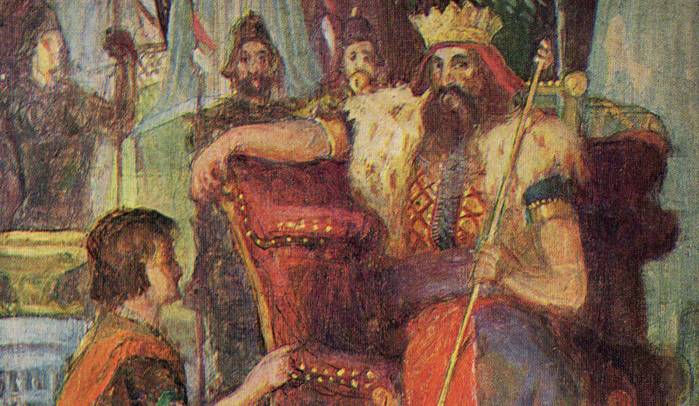 Shigeru Aoki, Wikimedia Commons
Shigeru Aoki, Wikimedia Commons
Henry VI of England
Henry VI came to the English crown as a literal baby, ascending to the throne before his first birthday. He had a mental breakdown in 1453 that left him unable to speak. In one of his lucid moments, he tried to end the Wars of the Roses by creating "Love Day" and forcing the warring leaders to hold hands.
Let's just say, it didn't work.
 Unknown Author, Wikimedia Commons
Unknown Author, Wikimedia Commons
He Was Deposed, Re-Crowned, And Deposed Again
The last years of Henry VI's reign before his 1461 deposing by forces of the House of York can be characterized as directionless floundering. He was exiled to Scotland from 1461-1470, briefly restored, deposed again, and then executed. All those changes, enough to drive anyone mad…
 James William Edmund Doyle, Wikimedia Commons
James William Edmund Doyle, Wikimedia Commons
Zhengde Emperor of the Ming Dynasty
China’s Ming Dynasty (1368-1644) is one of its most revered historical periods. And Emperor Zhengde is one of its most revered characters, mostly for all the wrong reasons. He would often lead foolish expeditions resulting in losses of territory and men and would also give to an imaginary double he called General Zhu Shou. An emperor with an imaginary friend? Bonkers…
 Ming Dynasty painter, Wikimedia Commons
Ming Dynasty painter, Wikimedia Commons
Rudolf II, Holy Roman Emperor
Rudolf II was as eccentric a Holy Roman Emperor as you can imagine—they’re all eccentric, aren’t they? His castle in Prague hosted a vast array of animals from tigers and lions to an orangutan and even a dodo bird.
Rudolf was a patron of the arts and sciences, as well as supporting alchemy and various mystics. A big of a mixed bag, then and definitely a little odd.
 Joseph Heintz the Elder, Wikimedia
Joseph Heintz the Elder, Wikimedia
George III of England
Percy Bysshe Shelley once described King George III as an “old, mad, blind, despised, and dying king.” Charming… The King showed signs of mental illness in the late 18th century, exacerbated by the stress of the Revolutionary War, American Independence from Britain, and the French Revolution on the continent.
The King’s mental and physical illness was later characterized by medical historians as porphyria.
 Workshop of William Beechey, Wikimedia Commons
Workshop of William Beechey, Wikimedia Commons
Carlota of Mexico
Carlota of Mexico was the first and only European-born Queen of Mexico. If that doesn’t give you whiplash, I don’t know what will. Born Charlotte of Belgium, she married Maximilian, Archduke of Austria. Her husband would later become the Emperor of Mexico, leading a group of Mexican archconservatives to overthrow their liberal president.
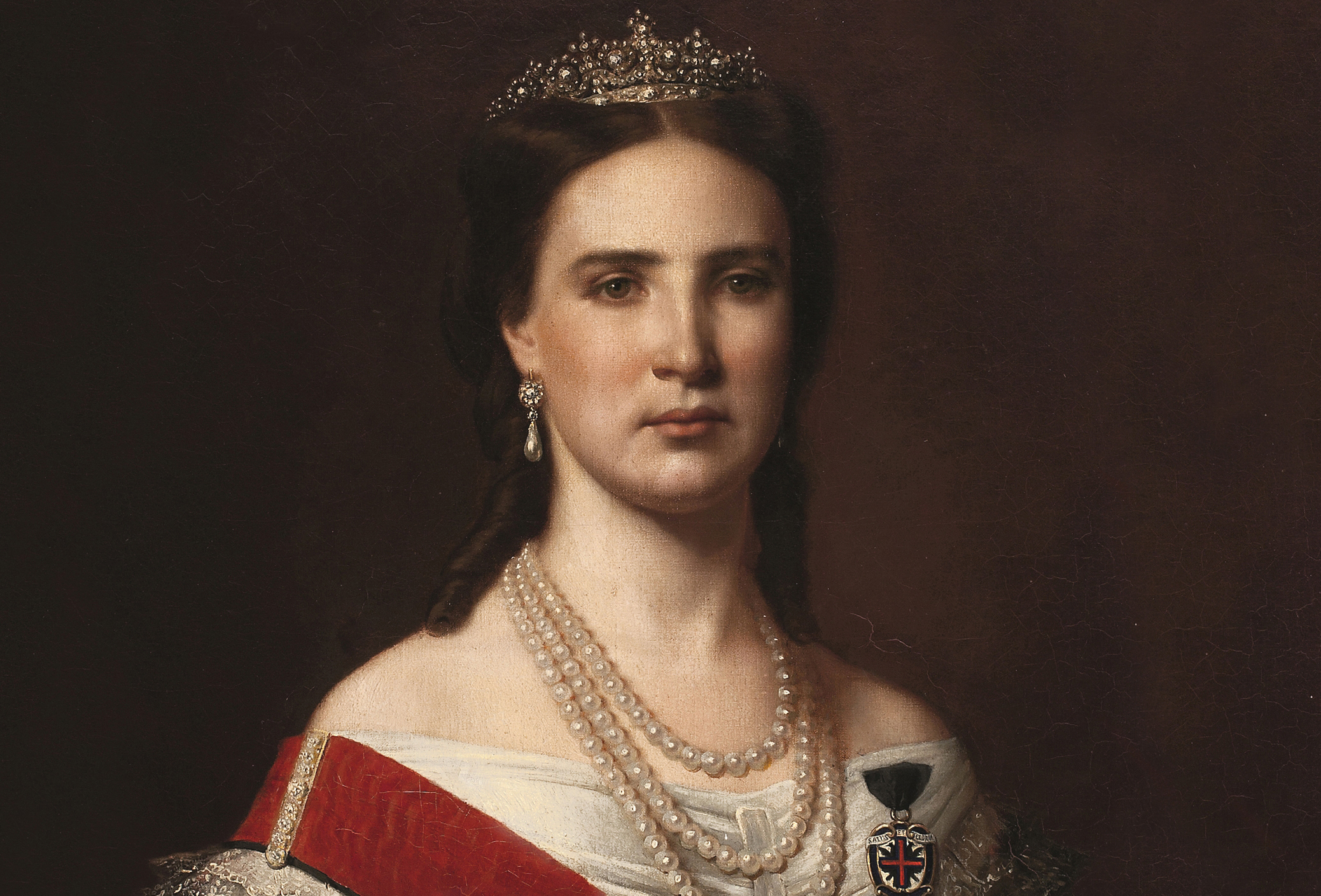 Santiago Rebull, Wikimedia Commons
Santiago Rebull, Wikimedia Commons
She Ended Up In An Institution
Following this, Carlota and her husband spent three years in Mexico, winning over the people by speaking Spanish and giving back land to the native communities of the country. Unfortunately, their conservative backers weren’t fans. Carlota would be returned to Europe to regain support for Maximilian from the Pope. She failed, suffered a mental breakdown and was institutionalized as a result.
 Joseph Smeeton, Wikimedia Commons
Joseph Smeeton, Wikimedia Commons
Ludwig II of Bavaria
Ludwig II of Bavaria was rather high on the lavishes of regal life. Building splendid palaces, giving royal patronage to the arts of all types and generally loving his newfound royal life as a newly-crowned King at 18.
Unfortunately for Ludwig, his penchant for palaces nearly bankrupted Bavaria and one morning, the bodies of the king and his physician were found floating in a lake.
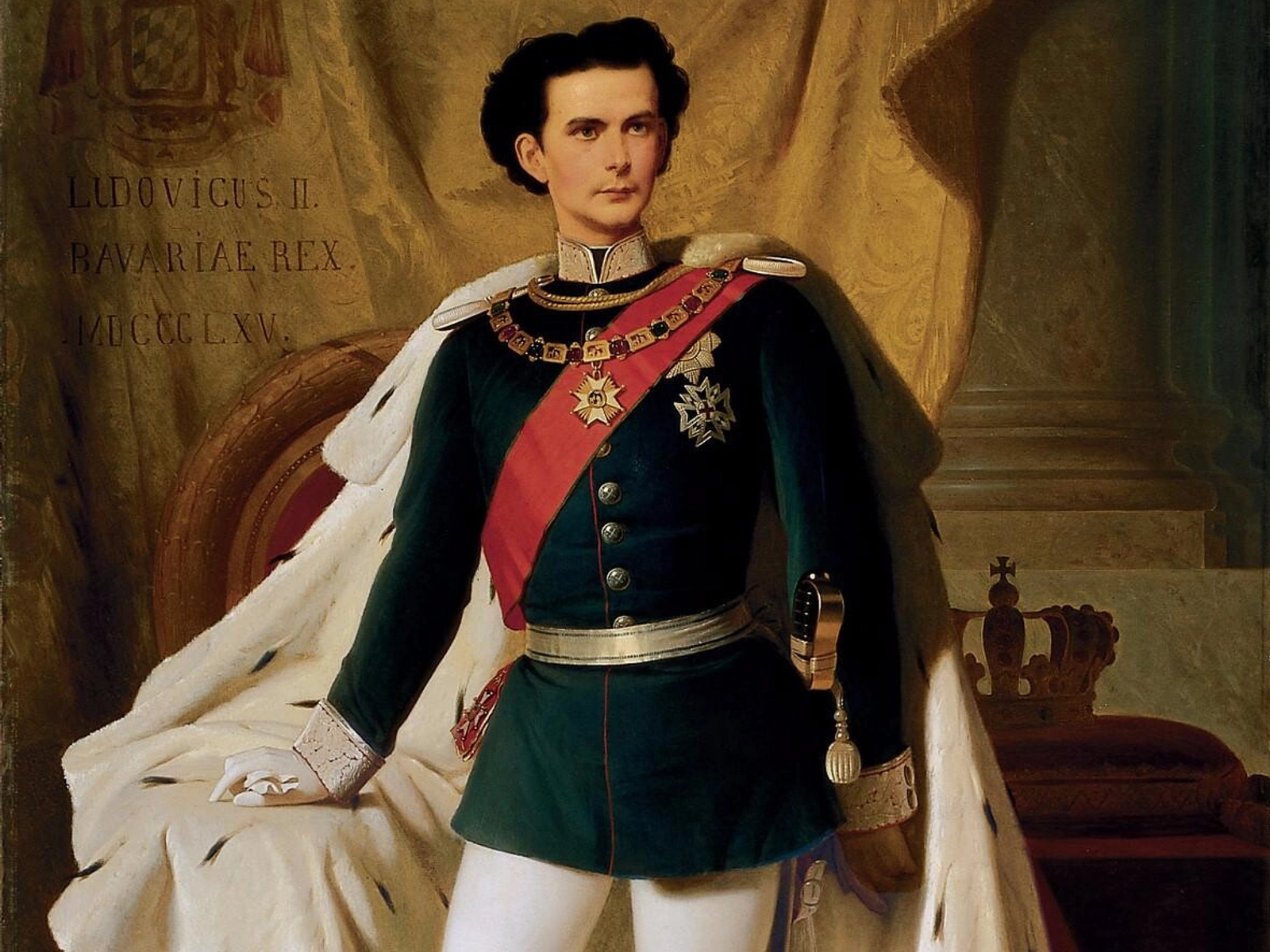 Ferdinand von Piloty, Wikimedia Commons
Ferdinand von Piloty, Wikimedia Commons
Emperor Nero of Rome
Emperor Nero of Rome rivals his uncle, Caligula, for madness (what were they putting in the water in Rome?!). At just 16, he assumed the throne and would rule for the next ten and a half years with what can only be described as a callous disregard for life. The man had his own mother "taken care of" because he thought she was plotting against him.
 John William Waterhouse, CC BY-SA 4.0, Wikimedia Commons
John William Waterhouse, CC BY-SA 4.0, Wikimedia Commons
Frederick William I of Prussia
Frederick William I of Prussia had a penchant for tall men. That is, he liked them to serve in his army. Rumour has it that Frederick would have his henchmen go out and pay families to put their tall sons under the command of the King. These tall men would form a battalion called the “Potsdam Giants,” that never actually saw battle.
 Workshop of Antoine Pesne, Wikimedia Commons
Workshop of Antoine Pesne, Wikimedia Commons
Justin II of Byzantine
Justin II of Byzantine heard voices in his head near-constantly and would hide under his bed in the evenings. The voices could only be soothed by the constant playing of an organ—the poor organist’s fingers!
 Constantine Manasses, Wikimedia Commons
Constantine Manasses, Wikimedia Commons
Farouk of Egypt
Nicknamed the “Thief of Cairo” thanks to his kleptomaniacal tendencies, Farouk I of Egypt was notorious for stealing other’s possessions, including Winston Churchill’s watch and a sword from the Shah of Iran. He couldn’t pinch the loyalty of the Army, though, and was overthrown in a 1952 coup. Nobody likes a guy with sticky fingers…
 Unknown Author, Wikimedia Commons
Unknown Author, Wikimedia Commons
Mobutu of Zaire
Before Zaire was called the Democratic Republic of the Congo, it was ruled by Mobutu Sese Seko. Seko had some rather Kim Jong-un-like tendencies, including stipulating that each news broadcast had to begin with an image of him descending from the heavens. God complexes, they’re a bit of a theme in this list…
Sado of Korea
Prince Sado of Korea was rather obsessed with his own image. So much so that he would wear different items of clothing every day and believed that his clothing was to blame whenever anything bad happened in the country. Such was his obsession with clothes that he ordered 30 suits to be ready to wear at any one time so that he could quickly change into a new one, resetting his good fortune-o-meter, I guess?
 Tiger Pictures, The Throne (2015)
Tiger Pictures, The Throne (2015)
General George S. Patton
General George Patton served for the American Army in WWII and is something of a national hero in the United States, serving in campaigns from Sicily to France and even driving his forces into Germany by 1945. Known for leading from the front and by example, General Patton “struck fear into the hearts of the enemy,” according to Dwight Eisenhower.
Have we missed any of history’s great (if crazy) leaders? What about the ones that were unhinged in the worst possible way? Let us know below!


